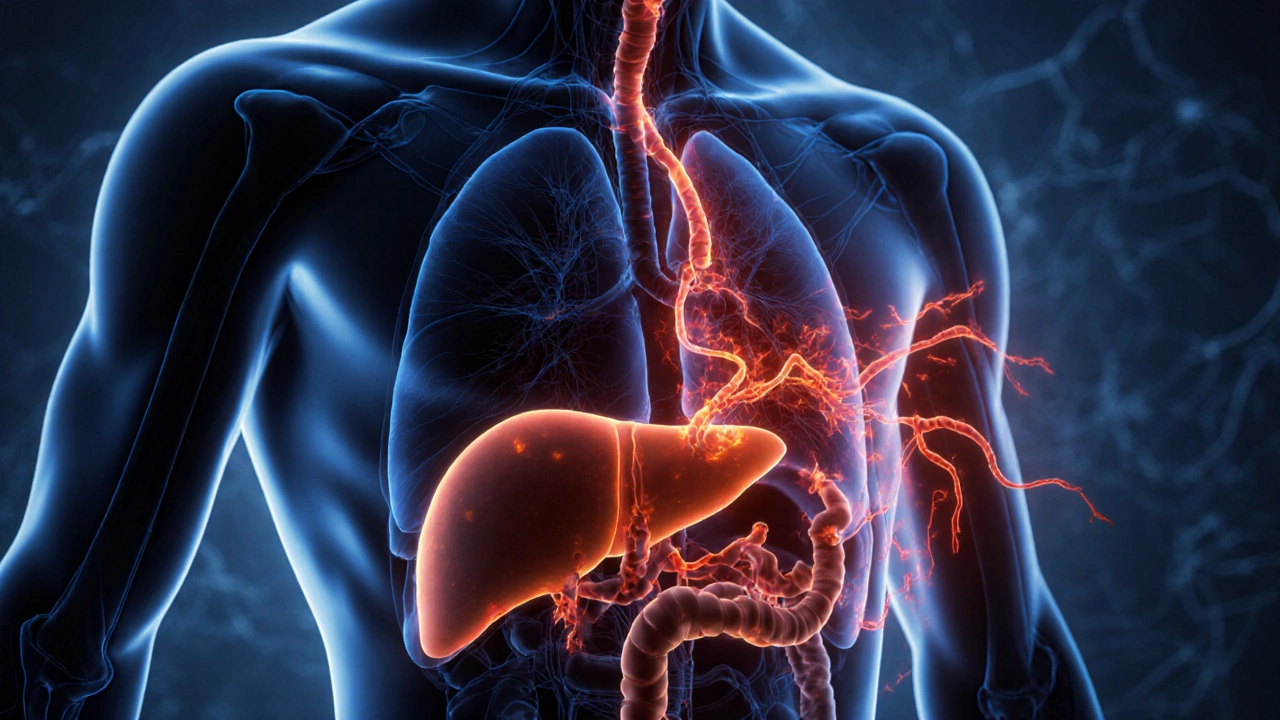Fastest Spreading Cancer: What It Is, How It Moves, and What You Need to Know
When we talk about the fastest spreading cancer, a type of cancer that rapidly invades nearby tissues and travels through the bloodstream or lymph system to distant organs. Also known as aggressive cancer, it doesn’t wait for symptoms to show up before it’s already advanced. This isn’t just about speed—it’s about stealth. The most dangerous cancers don’t scream for attention. They slip in quietly, growing where you can’t see them, until it’s too late.
The pancreatic cancer, a malignant tumor forming in the pancreas, an organ behind the stomach that helps digest food and regulate blood sugar is often called the silent killer cancer, a term used for cancers that show few or no early symptoms, making early detection nearly impossible. Why? Because the pancreas hides deep inside the body. By the time pain, jaundice, or weight loss appear, the cancer has likely already spread to the liver, lungs, or lymph nodes. That’s why survival rates stay so low. Other fast spreaders include certain types of lung cancer and aggressive forms of breast cancer, but none match pancreatic cancer’s combination of stealth and speed.
What makes a cancer spread fast? It’s not just the tumor. It’s the cells. Some cancer cells develop special tools—they break through tissue barriers, sneak into blood vessels, and survive in places they don’t belong. These are the ones that turn localized tumors into full-body threats. And here’s the hard truth: many people don’t realize they’re at risk until it’s too late. Smoking, chronic pancreatitis, obesity, and family history all raise your chances. But even people with no risk factors can get hit. That’s why knowing the subtle signs matters—unexplained weight loss, new-onset diabetes, back pain that won’t go away, or yellowing skin aren’t just inconveniences. They could be warning signs.
If you’ve read about fastest spreading cancer and felt uneasy, you’re not alone. Most people don’t think about cancer until it’s in the news or hits someone close. But understanding how it moves, where it hides, and what to watch for gives you power. You can ask the right questions at your next doctor’s visit. You can push for tests if something feels off. You can avoid ignoring symptoms that seem "minor." The posts below dig into real cases, hidden symptoms, and what doctors in India are seeing now—no fluff, no fearmongering, just facts you can use.

Which Cancer Spreads the Fastest? Fastest-Metastasizing Cancers Explained
Pancreatic, liver, and lung cancers spread the fastest, often before symptoms appear. Learn which cancers are most aggressive, why they spread so quickly, and what you can do to catch them early.

What You Shouldn't Tell Your Therapist
Feb, 25 2025



